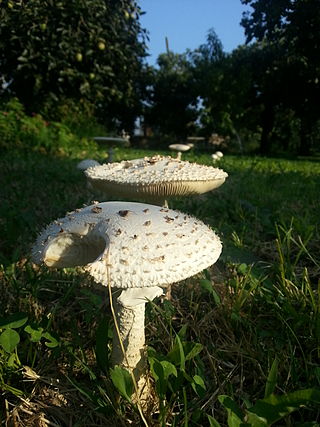
Gymnophthalmidae is a family of lizards with at least 250 species, sometimes known commonly as spectacled lizards or microteiids. They are called "spectacled" because of their transparent lower eyelids, which allow them to still see with closed eyes. As in most lizards, except geckos, these eyelids are movable. The Alopoglossidae have been recently moved from this family.
Riolama is a small genus of lizards in the family Gymnophthalmidae.

The Glypheoidea, is a group of lobster-like decapod crustaceans which forms an important part of fossil faunas, such as the Solnhofen limestone. These fossils included taxa such as Glyphea, and Mecochirus, mostly with elongated chelipeds. This group of decapods is a good example of a living fossil, or a lazarus taxon, since until their discovery in the 1970s, the group was considered to have become extinct in the Eocene. The superfamily Glypheoidea comprises five families. The two extant species, Neoglyphea inopinata and Laurentaeglyphea neocaledonica, are both in the family Glypheidae.

Green Mansions: A Romance of the Tropical Forest (1904) is an exotic romance by William Henry Hudson about a traveller to the Guyana jungle of southeastern Venezuela and his encounter with a forest-dwelling girl named Rima.

Banksia erythrocephala is a species of prickly shrub that is endemic to Western Australia. It has erect stems, sharply pointed pinnatifid leaves, cream-coloured and reddish black or all cream-coloured and yellow flowers, and egg-shaped fruit.
Westraltrachia inopinata is a species of air-breathing land snails, a terrestrial pulmonate gastropod mollusk in the family Camaenidae.

Thaumatoneura inopinata is a species of damselfly, sometimes called the cascade damselfly or giant waterfall damsel, and the only member of the genus Thaumatoneura. It is unusual in flying among the falling water and spray from waterfalls in moist tropical or subtropical forests in Costa Rica.

Helenodora is an extinct basal onychophoran or lobopodian genus known from the Carboniferous Carbondale Formation of Illinois. The only known species described is H. inopinata. The ecology of this animal is not well known, but it is thought that it may have lived on land and/or underwater.
Coleophora inopinata is a moth of the family Coleophoridae.

Neoglyphea inopinata is a species of glypheoid lobster, a group thought long extinct before Neoglyphea was discovered. It is a lobster-like animal, up to around 15 centimetres (5.9 in) in length, although without claws. It is only known from 17 specimens, caught at two sites – one at the entrance to Manila Bay in the Philippines, and one in the Timor Sea, north of Australia. Due to the small number of specimens available, little is known about the species, but it appears to live up to five years, with a short larval phase. A second species, previously included in Neoglyphea, is now placed in a separate genus, Laurentaeglyphea.
Nicothoe tumulosa is a species of copepod parasitic on the gills of the glypheoid lobster Neoglyphea inopinata. It was described as a new species in 1976 by Roger F. Cressey. It can be differentiated from related species by the setal formula, and the trunk's covering of small bumps, which give the species its name.

The genus Saproamanita contains about 24 species of agarics and is one of six genera in the family Amanitaceae, of which the similar Amanita is also a member. Saproamanita differs from Amanita in that its species are saprophytic, and not ectomycorrhizal.
Caenorhabditis inopinata - prior to 2017 referred to as C. sp. 34. - is a sister species to C. elegans.
Matigramma inopinata is a species of moth in the family Erebidae. It is found in North America.
Riolama leucosticta, the white-spotted riolama, is a species of lizard in the family Gymnophthalmidae. It is endemic to Venezuela.
Riolama luridiventris is a species of lizard in the family Gymnophthalmidae. It is endemic to Venezuela.
Riolama uzzelli is a species of lizard in the family Gymnophthalmidae. The species is endemic to Venezuela.
Riolama stellata is a species of lizard in the family Gymnophthalmidae. It is endemic to Brazil.
Nitrospira inopinata is a bacterium from the phylum Nitrospirota. This phylum contains nitrite-oxidizing bacteria playing role in nitrification. However N. inopinata was shown to perform complete ammonia oxidation to nitrate thus being the first comammox bacterium to be discovered.
Hartleya is a monotypic genus of flowering plants belonging to the family Stemonuraceae. The only species is Hartleya inopinata.






